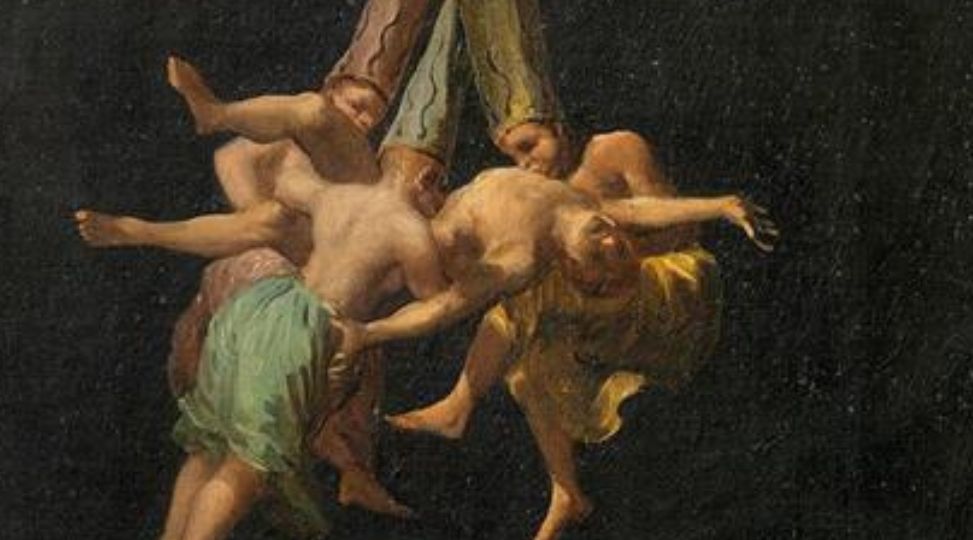
The Rhetoric of Paranoia in an ESTJ Culture
Download or listen to this article
Raney, Erika, March 6, 2024
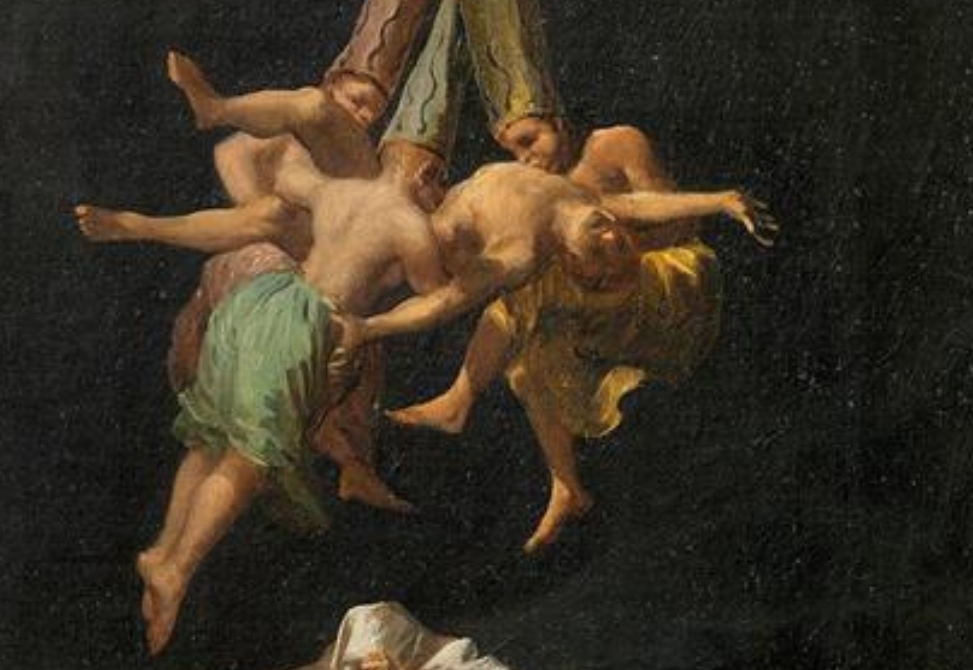
Against this mistrustful sociopolitical background emerges a ripe opportunity to capitalize on cultural leeriness and suspicion; to amplify people’s often valid underlying questions, fears, and concerns—or shadowy intuitions—with sincere recognition; and then offer a new set of values or ideals, oftentimes exploiting the nascent trust of these individuals toward a profitable or powerful end. Using their broad-reaching platforms, media personalities like Joe Rogan (Helmore, 2022; The Daily Beast, 2022), Tucker Carlson (Confessore, 2022), and Alex Jones (Bond, 2022) and a host of individuals in the wellness and alternative healing industries, including Dr. Christiane Northrup and Dr. Kelly Brogan (Dickson, 2023; Yeo, 2020), have published or broadcast material of dubious factual basis, material that can incite paranoia. Individuals across industries spanning wellness to technology have gained viewership and revenue by following a similar format: validate people’s subtle inner doubts or hunches by verbalizing their private questions (Were these vaccines too rushed?); then exploit that intuitional curiosity by making the situation appear as though it is worse than they could have ever imagined (Actually, the vaccine contains Microsoft microchip trackers); and finally, offer a revenue-generating solution (Buy these supplements instead).
Just Asking Questions
On his primetime Fox show prior to his 2023 ouster by the network following the $787.5 million Dominion defamation settlement, Tucker Carlson’s rhetorical style provided a case study in this approach. Nightly, he would ask simple, intuition-stoking questions such as, “If vaccines work, why are vaccinated people still banned from living normal lives?” (Huppke, 2021) and, “It may be worth asking yourself …‘Why do I hate Putin so much? Has Putin ever called me a racist? Has he threatened to get me fired for disagreeing with him?’” (Bella, 2022). The rhetorical tool of asking questions in this way makes Carlson appear as though he is giving voice to a diversity of perspectives, all the while providing legitimizing air time to the foundations of conspiratorial thinking yet evading explicit endorsement of the ideas in question. The crux of this pattern is that when intuitions are weak and unconscious in the culture, individuals are more easily inspired to move against their own personal interests for the sake of a larger collective feeling-toned narrative or set of principles and values that is actually put in place to serve outside interests. Those broader collective values offer the allure of belonging in a hyper-individualistic cultural climate where loneliness and isolation have been identified by the U.S. Surgeon General as major epidemics (Murthy, 2023).
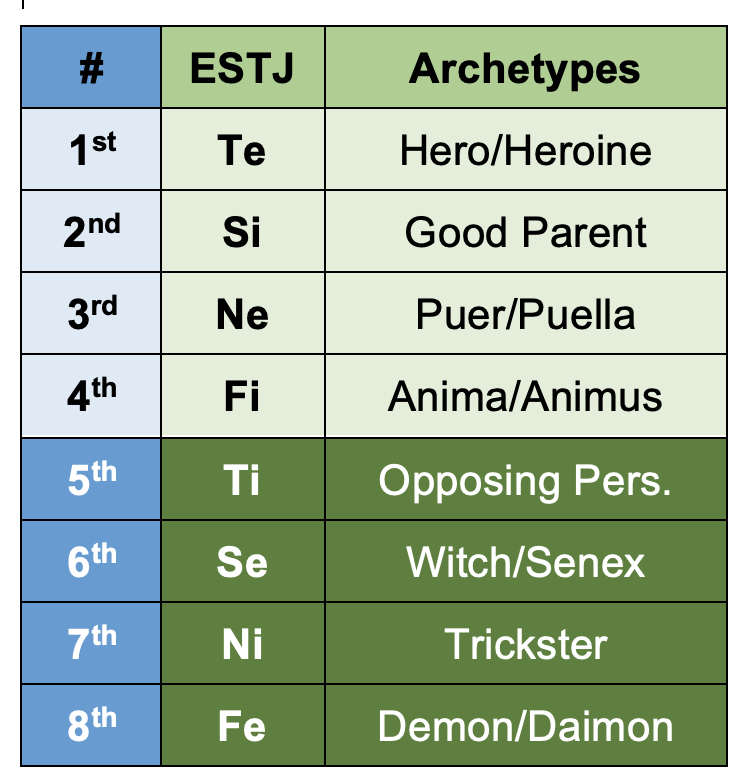
Our society has been overwhelmed by a one-sided and therefore distorted ESTJ patriarchal ideology, characterized by its cruel dominance over the weak and powerless. It maintains its control through many psychological, ethical, and spiritual traits, which become destructive when taken to the extreme. (p. 521)
This one-sided ESTJ makeup, which leans heavily into an authoritative extraverted thinking function, might make contemporary individualistic American culture particularly vulnerable to the exploitation of intuition and the co-opting of personal values when one considers we are living during a period of heightened anxiety and social uncertainty, which only amplifies preexisting pressures of personal survival and a lack of social safety nets that have become socioeconomic hallmarks of one-sided individualism. A recent article in Nature Medicine suggested that such prevalent conspiracies as those we have seen surrounding COVID-19 and its vaccines “should not be understood as simply false beliefs” but “can be read as expressions of popular fears and anxieties” (Pertwee et al., 2022, pp. 456-457). The appeal of conspiracy theories could in part derive from the placement of images of catastrophe or mistrust (introverted intuition, Ni) within an acceptable moral framework (feeling). The article’s authors acknowledged the story-telling power that popular media figures and community leaders can wield: “Conspiracy theories represent attempts to impose narrative coherence on frightening situations” and, therefore, “emerge through the desire to make sense of one’s social environment” (p. 457). It is important to note that a pathological extraverted thinking culture generates the shadow of paranoia in the first place. A culture that denies and represses alternative knowledge or dismisses images that diverge from the predominant paradigm will fuel unconscious complexes.

Selective Wellness
These elements all came together in the prominent career of the former obstetrics and gynecology physician Dr. Christiane Northrup and the debate she stoked over vaccines and bodily autonomy in the COVID-19 era, a messaging effort that also happened to drive increased traffic to her channels, with her Facebook audience soaring to over half a million followers (Beres et al., 2023, pp. 242-244). Northrup’s Instagram and YouTube accounts were either disabled or censored for her positions on the COVID-19 vaccine in 2021 following a condemnatory report from the Center for Countering Digital Hate, effectively removing the surge in viewership and follower data from public access. She migrated to Telegram, where her following climbed above 80,000 that same year (Kestenbaum, 2022). Northrup had been known as a feminist-leaning wellness advocate and medical expert who hit the national stage on shows like the Oprah Winfrey Show when she published her 1994 bestselling book, Women’s Bodies, Women’s Wisdom; that book launched her as a New Age guru and was followed by the publication of other books like The Wisdom of Menopause, Goddesses Never Age, and Dodging Energy Vampires. In 2015, after a decade of cautioning her audiences against childhood vaccines, she withdrew her medical license and moved more squarely into the holistic, herbal supplement business with her own brand, Amata Life (Kestenbaum, 2022).
Like many in the New Age field, this Dartmouth-educated doctor has been able to speak directly to a largely repressed inner awareness among women that they tend to suffer disproportionately under a medical establishment that has historically failed to adequately study female bodies. A 2022 meta-analysis of American medical studies across nine journals demonstrated a clear under-representation of women in biomedical research, including just 37% participation in randomized controlled trials and far lower representation in drug trials, yielding a lacuna of good data on how emerging medications and treatment protocols affect women’s health outcomes. The authors concluded that the gender gap and misogynistic research studies “remain present in the contemporary medical literature” (Merone et al., 2022). Northrup empathetically addresses a quiet intuitional knowing among her female audience members that their needs and self-knowledge are not being taken seriously by the financial and patriarchal biases of modern medical institutions while overriding that intuition with her own. She makes several reasonable statements on her website, including:
I have been an advocate for women taking control of their health for decades. Yet, sadly our medical freedom is under attack now more than ever with heath care providers, insurance companies, governments, and schools dictating how we take care of our health and the health of our families. (Northrup, 2022, ¶ 1)
Then she follows her generally rational assertions with a series of questions framed in the familiar Carlson style, amplifying the subtle concerns of her audience: “Do unvaccinated children pose a health risk to others, especially immunocompromised children?” She answers unequivocally, “No.” Her answer is contradicted by statistics showing that “outbreaks of diseases that primarily kill children are spreading around the world” (Nolen, 2023); deaths from measles alone rose 43% globally in 2022 (Nolen, 2023), which correlates with gaps in immunization following the Covid-19 pandemic. Northrop then asks, “Have vaccines saved millions of lives?” She responds, “No.” However, for the polio vaccine alone, detailed tracking and reporting from the CDC and WHO demonstrate that 1.5 million childhood deaths have been prevented since 1988 (CDC, n.d.). These questions create an invitation to doubt institutional knowledge and data as a whole—rather than discerningly in parts—by appealing to the public’s fear in order to override a genuine, nascent intuition with her own dictates. Northrup is not actually asking her audience to engage its own intuition or feelings. She is gently nudging those concerns to the surface in order to offer her own persuasive arguments through the introverted feeling (Fi) function, which sits in the inferior position of America’s ESTJ cultural type.
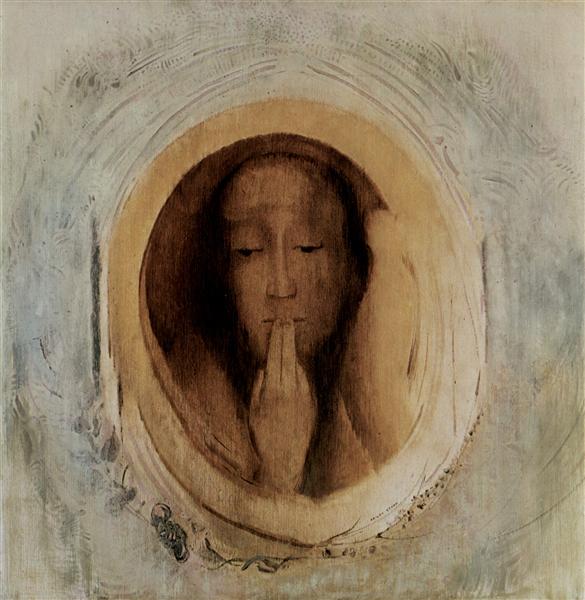
When Individualism Diminishes the Individual
The American complex surrounding individualism as a value, which relates to the feeling function, seems to sit at the crux of this phenomenon. Introverted feeling prioritizes inner principles and values, being “oriented to the individual instead of the group” (Shumate, 2021, p. 175), which reflects the uniquely individualistic landscape of the American psyche as observed originally and in great detail by Alexis de Tocqueville in his seminal work Democracy in America. Extraverted feeling is harmonizing, taking the needs of the whole into consideration when determining a set of morals or way forward. This attitude is echoed in what de Tocqueville (2000) identified as America’s doctrine of “self-interest well understood,” by which Americans temper individualism by combining “their own well-being with that of the fellow citizens” through egalitarian participation in public institutions and social good (pp. 500-501). However, Fe is in the least conscious, demonic position for ESTJ, opposing introverted feeling in the weak fourth position. If the inferior function has not gained sufficient strength, it can be overpowered by the demonic function (Beebe, 2004/2017, p. 46). American individualism thus becomes a tricky contradiction in terms when opposed by the harmonizing essence of extraverted feeling (Fe)—the function that is “largely responsible for the fact that so many people flock to the theatre or to concerts” and aligns with “traditional and generally accepted standards” (Jung, 1921/1971, ¶ 596). When colored by America’s typological perspective, extraverted feeling can take on demonic archetypal energy that serves to undermine the lonely shadow aspects of individualism because in its primitive state, Fe can degenerate into groupthink. With Fe in this position, efforts to “create or maintain group solidarity actually undermine unity” (Shumate, 2021, p. 226), feeding into a fractious and divisive social environment that is further moved by the obscured knowledge of a trickster introverted intuition.
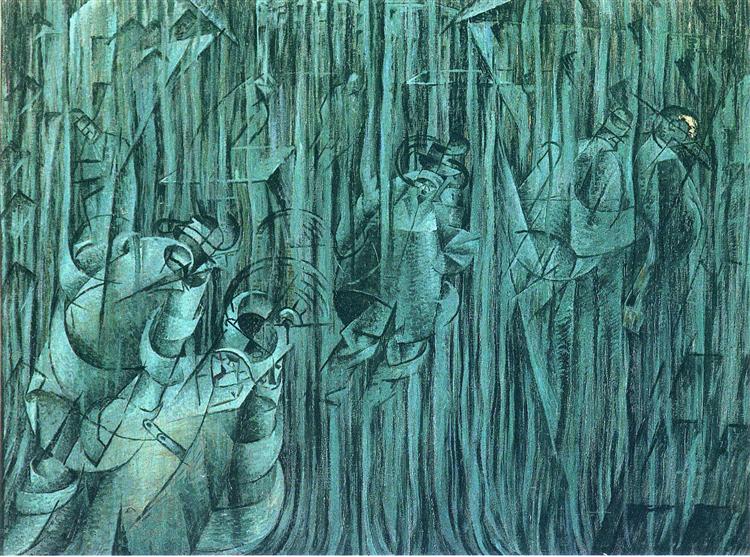
American psyche through the symbolic, nearly holy power of such American icons of freedom, equality, and liberty as the Constitution, the Flag, the Statue of Liberty, and The Star Spangled Banner.
Any great conspiracy theory begins with a kernel of truth. It was true in 2020 that no one knew whether the vaccines would work, although later studies showed that unvaccinated patients were almost two and a half times more likely to die from early COVID variants than vaccinated patients (Ikeokwu et al., 2023). And it is true today that real accounts of vaccine injury exist (Yasmin, F. et al., 2023; CDC, 2023). However, in our largely secularized Western culture, truth is often sought not from factual data but from an inner wisdom, an introverted intuition, probably in compensation for the predominance of extraverted thinking. We find this aspect of the religious function in the unconscious trickster position of America’s psychology. Because America’s Ni function is in shadow with archetypal trickster qualities, it takes on an almost mystical quality. The deceptive essence of unconscious Ni was propelled to new heights with critical mass during the COVID-19 pandemic that began in the spring of 2020. By April of 2020, a viral Twitter movement emerged using the hashtag #FilmYourHospital, encouraging people to post photos and videos of empty or quiet hospitals and emergency departments to social media to prove that the pandemic was a government hoax. Gruzd & Mai (2020) explained: “The premise for this conspiracy theory rests on the assumption that if hospital parking lots and waiting rooms are empty, then the pandemic must not be real or at least not as severe as reported by health authorities and the media” (p. 1). Harnessing the use of images—the language of introverted intuition—stakeholders interested in casting doubt caused people to feel tricked by authorities and elites, fueling an inner longing to disbelieve the unfolding global medical emergency, which claimed more than 3 million lives in 2020 alone (Gruzd & Mai, 2020; World Health Organization, n.d.). Amidst the confusion, the authoritative hero characteristic of a one-sided Te culture emerged with aims to consolidate power. “I alone can fix it,” President Donald J. Trump became known to declare during this era (Politico, 2020), and even as recently as 2023 during a rally, he asserted, “I am the only one who can save this nation” (Forbes Breaking News, June 14, 2023).
Introverted intuition “perceives all the background processes of consciousness” and is the mode through which “unconscious images acquire the dignity of things” (Jung, 1921/1971, ¶ 657). In its inner subjectivity, Ni is a non-linear, non-logical, and seemingly acausal experience of knowing that is not favored in an Anglo-European rationalist and positivist culture, which tends to want to know how and why. Northrup and others like her ask their followers to simply trust without reason, to essentially abandon their own evaluative feeling and thinking functions so that a substitute set of principles may be offered, one that inflates the speaker’s authority—a primary interest of pathological extraverted thinking. Shumate (2021) aptly juxtaposed the two functions of Ni and Ti (described by Beebe as the knowing and the understanding functions respectively), in order to demonstrate that knowing is often thought to be science and can, therefore, be privileged over understanding in discourse, although both are necessary for scientific endeavor (pp. 62-64). Because the Ni function is often discredited in a Te culture, it tends to operate covertly. Ni is a function that lacks outer context or clear correlates for its images. In the 7th-trickster position, it can become convinced of just about anything: here in the trickster shadow, Ni “almost always feels dissatisfied” and “feels blind about the future” but also “desperately wants affirmation for … insights” (Shumate, 2021, p. 203), offering a particular psychic vulnerability to one who seeks answers or guidance surrounding these inner images.
Shumate (2021) reported that with introverted feeling in the inferior position, one can “have trouble identifying one’s deepest desires” and might “feel the need to corral or suppress feelings” (p. 219). This difficulty could also be interpreted as an inability to clearly identify one’s own values and determine what best serves a person on the individual or subjective level. Jung (1921/1971) emphasized that this function “devalues the object” and can obscure one’s own depths of feeling from oneself, creating a coldness and emotional distance (¶ 638). As a consequence, when Fi is in the inferior position—where it “subjectively feels itself to be the real one; it feels itself the most important” (von Franz, 1971/2013, p. 26)—this dissociation from a set of authentic personal values might become a life-threatening hazard.
Devaluing Values
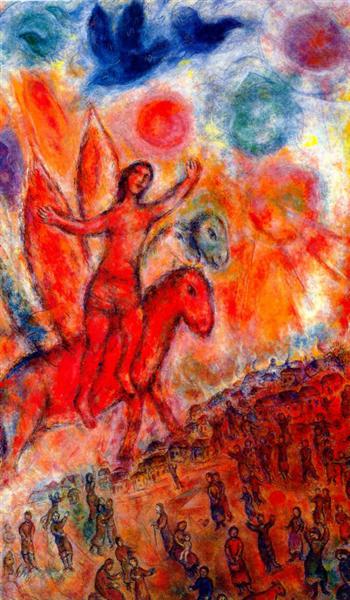
The aforementioned dynamic exposes a scenario where the weak Fi function drops one into the unconscious, which is vulnerable to paranoia from the images that appear via the Ni trickster function. These images can then be co-opted by the Fe demonic function and turned against oneself in order to serve the dominant attitude of the community, which can be oppositional to personal interests. More than 150 years ago, de Tocqueville (2000) prophetically cautioned of similar cultural dynamics stemming from the social doctrine of “self-interest well understood,” an unhealthy manifestation of extraverted feeling which might predispose individualistic, self-loving Americans to “willingly sacrifice a part of their time and their wealth to the good of the state” in a way that turns “personal interest against itself” (p. 501). De Tocqueville painted the American as “independent of his fellow citizens” but also “isolated and without defense against the action of the greatest number” (p. 409). Within this dynamic, the symbols of equality and self-determination, central to the American mythos, are employed to serve an alternative mass-mindedness that masquerades as pioneering and revolutionary. Similarly, Beres et al. (2023) observed that Northrup’s and QAnon’s “Great Awakening” phrase was historically used in American evangelical revivalist movements that “focused on moral renewal and generated waves of charismatic preachers and cults, united in their anticipation of the savior’s imminent return” (p. 240). The phrase is evocative of an American frontierism that broke from the aristocratic bonds of the Old World in service of individualism and self-sufficiency, both principles of introverted feeling that have been collectivized by the demonic extraverted feeling function in this cultural complex and one-sided typology.
In one of her 2020 broadcasts, Northrup declared to her followers, “We are, indeed, at war,” a war described as “good versus evil” and “dark versus light” (as cited in Kestenbaum, 2022). Here rises, through the doorway of the inferior introverted feeling, the demonic extraverted feeling, the 8th and least conscious function in the pathological American ESTJ type. This demonic Fe establishes greater harmonious morality among the masses by identifying an other, or scapegoat, that becomes the image of a worthy antagonist. In these statements, Northrup set up a plausible validation of her assertions that the pandemic is a hoax, or that vaccines are unquestionably dangerous, or that medical intervention should be minimal when one does fall ill because any such crisis might be part of a bigger plan. Jung (1921/1971) explained that under the influence of extraverted feeling, individuals might be compelled to override personal judgment and call something beautiful or good simply because that evaluation fits with the general consensus and doing otherwise might “upset the general feeling situation” (¶ 595). In the demonic position, then, Fe is capable of leveraging a vilified outsider in order to establish blind cohesion in a social unit. Shumate (2021) noted that demonic Fe can fail to identify ill intent and, notably, “can feel alienated from others and yet become the pillar of the community” (p. 226). Thus, an unconscious reversal takes place whereby the outsider perspective or faction shapeshifts into the insider position. Another function dynamic also ensues: all those who feel othered based on the cultural denial of their introverted intuition can be united through Fe against a scapegoat who has been identified by the charismatic power of the anima archetype using the introverted feeling function tyrannically.
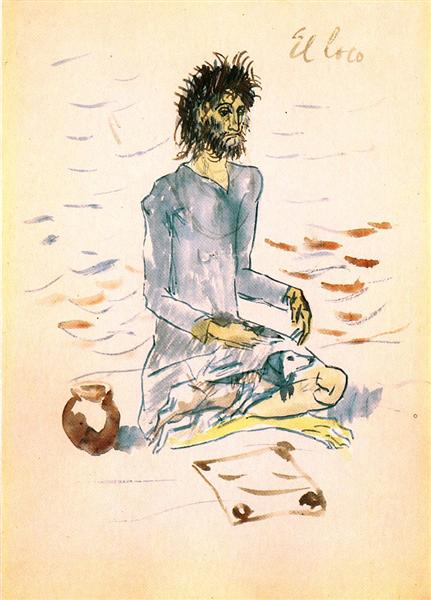
The Cudgel of Morality
In this patriarchal and heavily capitalistic culture that privileges the thinking functions, feeling seems to dominate the unconscious collective psyche. In the rise of cults of personality in their contemporary manifestation, the inflated extraverted thinking function establishes a goal; then anything that does not adhere to that universal aim is excised. About the extraverted thinker, Jung said:
His moral code forbids him to tolerate exceptions; his ideal must under all circumstances be realized, for in his eyes it is the purest conceivable formulation of objective reality, and therefore must also be a universally valid truth, quite indispensable for the salvation of mankind. (Jung, 1921/1971, ¶ 585)
In this crusade-like paradigm, connection to the genuine feelings and needs of a diverse community is lost as unhealthy extraverted thinking tightens its grip on power: “Personal sympathy with others must in any case suffer unless they too happen to espouse the same ideal” (Jung, 1921/1971, ¶ 589). To the extent that there were strong anti-vaccine sentiments, there existed on the other side of the debate a similar, vehement intolerance of those who were understandably skeptical of the COVID-19 vaccines and the new mRNA technology. In this dynamic, the nuanced middle falls out of the equation when it comes to the public good. The American commitment to linear growth, exceptionalism, and profitability is a cruel mistress to those who do not or cannot adhere to the game, by chance or choice—including those who are poor, disabled, artistically driven, empathetic, and feminine.
Beebe (1992) amplified this dynamic as a foundational aspect of America’s systemic racism that privileges whiteness and vilifies others’ blackness, requiring the other, alone, to carry the inferior function, introverted feeling. Fi is placed as a burden upon those who have the least ability to change the sociopolitical landscape. In this systemic disempowerment, high-profile media personalities like Northrup and Alex Jones have emerged as (white) saviors upon which inferior feeling can be projected by the inclinations of introverted intuition as trickster. Beebe (1992) argued that America’s darkest shadow is then “carried by the smiling, sinister white man at the base of the American character, the man with demonic extraverted feeling” (p. 139). Yet, at the core of what could ultimately be identified as a cultural victim-savior complex that props up cults of personality is a festering, oppositional Te/Fi wound. In this lopsided relationship, pathological righteousness overtakes not only the inner morality of the individual but the inner images as well.

Northrup and others like her demonstrate that despite our best efforts and best intentions, we cannot escape becoming the thing we are trying to change without extraordinary conscious effort. Northrup was a hero to the women who felt unheard and misunderstood by their medical doctors. Her early career championed the genuine needs of the individual who was lost in a sea of collectivist medicine, yet even our respected leaders and experts are susceptible to the trickster nature of the knowing function, regardless of where introverted intuition falls in their own psychological makeup. As culture shapes us, our attempts to reshape culture are inevitably vulnerable to the dominating perspective or paradigm. The gods live through us, and the typological essence of a community swaddles us all in its bosom, lulling us back to sleep even as we struggle to gain consciousness. This is the precariousness of a culture suffering from unconscious feeling and a slippery inner intuitional knowing, and it is the edge upon which American culture teeters.
References
Beebe, J. (1992). Identifying the American shadow: Typological reflections on the Los Angeles riots. Psychological Perspectives, 27(1), 135-139.
Beebe, J. (2004). Understanding consciousness through the theory of psychological types. In J. Cambray & L. Carter (Eds.), Analytical psychology: Contemporary perspectives in Jungian analysis (pp. 83-115). Brunner-Routledge.
Bella, T. (2022, February 23). Tucker Carlson, downplaying Russia-Ukraine conflict, urges Americans to ask, “Why do I hate Putin?” The Washington Post. https://www.washingtonpost.com/media/2022/02/23/tucker-carlson-putin-russia-ukraine/
Beres, D., Remski, M., & Walker, J. (2023). Conspirituality: How New Age conspiracy theories became a health threat. Hachette Book Group.
Bond, S. (2022, August 6). How Alex Jones helped mainstream conspiracy theories become part of American life. NPR. https://www.npr.org/2022/08/06/1115936712/how-alex-jones-helped-mainstream-conspiracy-theories-into-american-life
Centers for Disease Control and Prevention. (n.d.). Polio. U. S. Department of Health & Human Services, https://www.cdc.gov/globalhealth/newsroom/topics/polio/
Centers for Disease Control and Prevention. (2023, September 12). Selected adverse events reported after COVID-19 vaccination. U. S. Department of Health & Human Services. https://www.cdc.gov/coronavirus/2019-ncov/vaccines/safety/adverse-events.html
Chen, Y., Long, J., Jun, J., Kim, S. H., Zain, A. & Piacentine, C. (2023). Anti-intellectualism amid the COVID-19 pandemic: The discursive elements and sources of anti-Fauci tweets. Public Understanding of Science, 32(5), 641–657. https://doi.org/10.1177/09636625221146269
Confessore, N. (2022, April 30). How Tucker Carlson reshaped Fox News—and became Trump’s heir. The New York Times. https://www.nytimes.com/2022/04/30/us/tucker-carlson-fox-news.html
de Tocqueville, Alexis. (2000). Democracy in America. (H. C. Mansfield & D. Winthrop, Eds. & Trans.). University of Chicago Press.
Dickson, E. J. (2023, June 13). Why are so many popular wellness influencers red-pilled? Rolling Stone. https://www.rollingstone.com/culture/culture-features/conspirituality-wellness-world-red-pilled-1234770419/
Enders, A. M., Uscinski, J. E., Klofstad, C. A., Wuchty, S., Seelig, M. I., Funchion, J. R., Murthi, M. N., Premaratne, K., & Stoler, J. (2022). Who supports QAnon? A case study in political extremism. The Journal of Politics, 84(3), 1844–1849.
Forbes Breaking News. (2023, June 14). Trump tells supporters “I am the only one who can save this nation” After Arraignment [Video]. YouTube. https://www.youtube.com/watch?v=n1lrAqnaegM
Giannini, J. (2004). Compass of the soul. Center for Applications of Psychological Type.
Gruzd, A., & Mai, P. (2020). Going viral: How a single tweet spawned a COVID-19 conspiracy theory on Twitter. Big Data and Society, 7(2). https://journals.sagepub.com/doi/full/10.1177/2053951720938405
Helmore, E. (2022, January 30). Joe Rogan: Rise of a highly controversial cultural power. The Guardian. https://www.theguardian.com/us-news/2022/jan/30/joe-rogan-neil-young-feud-spotify-music-streaming-industry
Hetherington, M. J. (2006). Why trust matters: Declining political trust and the demise of American liberalism. Princeton University Press.
Huppke, R. (2021, May 11). Column: Raising questions about the way Tucker Carlson raises questions. Chicago Tribune. https://www.chicagotribune.com/columns/rex-huppke/ct-tucker-carlson-vaccine-covid-fox-news-huppke-20210511-3vvviqpqh5dntaz6oxiwcjgvca-story.html
Ikeokwu, A. E., Lawrence, R., Osieme, E. D., Gidado, K. M., Cullen, G., & Dolapo, O. (2023). Unveiling the impact of COVID-19 vaccines: A meta-analysis of survival rates among patients in the United States based on vaccination status. Cureus, 15(8): e43282. doi: 10.7759/cureus.43282
Jung, C. G. (1921/1971). Psychological types. CW6.
Jung, C. G. (1957/1970). The undiscovered self (present and future). In CW10.
Kennedy, B., Tyson, A., & Funk, C. (2022, February 15). Americans’ trust in scientists, other groups declines. Pew Research Center. https://www.pewresearch.org/science/2022/02/15/americans-trust-in-scientists-other-groups-declines/
Kestenbaum, S. (2022, May 3). Christiane Northrup, once a new age health guru, now spreads COVID disinformation. The Washington Post. Retrieved August 21, 2022 from https://www.washingtonpost.com/religion/2022/05/03/covid-christiane-northrup/
Kuznia, R., Bronstein, S., Devine, C., & Griffin, D. (2021, October 19). They take an oath to do no harm, but these doctors are spreading misinformation about the COVID vaccine. CNN. https://www.cnn.com/2021/10/19/us/doctors-covid-vaccine-misinformation-invs/index.html
Merone, L., Tsey, K., Russell, D., & Nagle, C. (2022). Sex Inequalities in Medical Research: A Systematic Scoping Review of the Literature. Women’s Health Reports, 3(1), 49–59. https://doi.org/10.1089/whr.2021.0083
Murthy, V. H. (2023). Our epidemic of loneliness and isolation: the U. S. Surgeon General’s advisory on the healing effects of social connection and community. Office of the U. S. Surgeon General. https://www.hhs.gov/sites/default/files/surgeon-general-social-connection-advisory.pdf
Naylor, B. (2022, January 11). Dr. Fauci says GOP Sen. Paul’s false accusations have sparked death threats. NPR. https://www.npr.org/2022/01/11/1072110378/dr-fauci-says-gop-sen-pauls-false-accusations-have-sparked-death-threats
Nolen, S. (2023, November 25). Unvaccinated and vulnerable: Children drive surge in deadly outbreaks. The New York Times. https://www.nytimes.com/2023/11/25/health/vaccines-children-zero-dose.html
Northrup, C. (2022, September 21). 7 health questions you need to ask now. Retrieved Oct. 14, 2022 from https://www.drnorthrup.com/5-health-questions-you-need-to-ask-now/
Olmstead, M. (2022, August 24). Fauci is retiring. Will QAnon let him go? Slate. https://slate.com/news-and-politics/2022/08/qanon-fauci-conspiracy-theories-retirement.html
Pertwee, E. G., Simas, C., & Larson, H. J. (2022, March 10). An epidemic of uncertainty: rumors, conspiracy theories and vaccine hesitancy. Nature Medicine. 28, 456–459. https://doi.org/10.1038/s41591-022-01728-z
Politico. (2020, August 20). Trump at 2016 RNC: “I alone can fix it” [Video]. Politico. https://www.politico.com/video/2020/08/20/trump-at-2016-rnc-i-alone-can-fix-it-085403
Sawhill, I. (2018, October). What the forgotten Americans really want—and how to give it to them. The Brookings Institute. https://www.brookings.edu/wp-content/uploads/2018/10/es_20181010_sawhill_essay_print_version.pdf
Shumate, C. (2021). Projection and personality development via the eight-function model. Routledge.
Statista. (2023). Number of deaths from COVID-19 in the United States as of March 10, 2023 by state. https://www.statista.com/statistics/1103688/coronavirus-covid19-deaths-us-by-state/
Suliman, A. (2022, December 9). Fauci slams “lowlife” trolls harassing his wife, children over COVID. The Washington Post. https://www.washingtonpost.com/nation/2022/12/09/anthony-fauci-harassment-coronavirus/
The Daily Beast. (2022, January 14). Joe Rogan is mainstreaming right-wing misinformation. The Daily Beast. https://www.thedailybeast.com/joe-rogan-is-mainstreaming-right-wing-misinformation
von Franz, M.-L. (1971/2013). The inferior function. In M-L von Franz, & J. Hillman (Eds.), Lectures on Jung’s typology. Spring Publications.
Ward, C., & Voas, D. (2011). The emergence of conspirituality. Journal of Contemporary Religion, 26(1), 103–121. doi: 10.1080/13537903.2011.539846
Wilstein, M. (2021, October 14). Seth Meyers nails Tucker Carlson’s “just asking questions” nonsense. The Daily Beast. https://www.thedailybeast.com/seth-meyers-nails-tucker-carlsons-just-asking-questions-nonsense
World Health Organization. (n.d.). The true death toll of COVID-19: Estimating global excess mortality. https://www.who.int/data/stories/the-true-death-toll-of-covid-19-estimating-global-excess-mortality
Yasmin, F., Najeeb, H., Naeem, U., Moeed, A., Atif, A. R., Asghar, M. S., Nimri, N., Saleem, M., Bandyopadhyay, D., Krittanawong, C., Fadelallah Eljack, M. M., Tahir, M. J., & Waqar, F. (2023). Adverse events following COVID-19 mRNA vaccines: A systematic review of cardiovascular complication, thrombosis, and thrombocytopenia. Immunity, Inflammation and Disease, 11(3), e807. https://doi.org/10.1002/iid3.807
Yeo, P. K. (2020, December 2). Ex-Goop contributor Kelly Brogan brings her COVID denialism to alt-right haven Telegram. The Daily Beast. https://www.thedailybeast.com/ex-goop-contributor-kelly-brogan-brings-her-covid-denialism-to-alt-right-haven-telegram
Images
Bent, I. (n.d.) Figures in the park.
Boccioni, U. (1911). States of mind III: Those who stay.
Chagall, M. (1977). Phaeton.
Goya, F. (1797). The witches’ flight.
Picasso, P. (1904). The fool.
Redon, O. (1900). Silence.
Steinberg, S. (1974). Utopia.
–
Images courtesy of wikiart.com






The general type problem that this article addresses is such a difficult one: What does it mean for a person or a culture to have a specific type preference when, due to trauma, the strengths normally associated with that type preference are largely lacking? In American culture today, and especially in our politics, we seem to lack for good extraverted thinking and introverted sensation, yet the history of the country and the culture supports the ESTJ type diagnosis. To talk about American culture today in relation to ESTJ seems like an insult to all well-developed people who have the ESTJ orientation. Likewise, when we try to analyze someone in the culture or the politics who is crazy and destructive and suggest a likely MBTI type for that person based on the eight-function, eight-archetype model, it feels like an insult to every relatively healthy person of that type, because, again, probably due to trauma, the destructive person is not using their dominant and auxiliary functions in the usual ways. I think this kind of analysis is an area in which the type movement has a lot of opportunity for fresh insights and growth, because it is in conflict with so many of our underlying assumptions about type that were established in the 20th century.